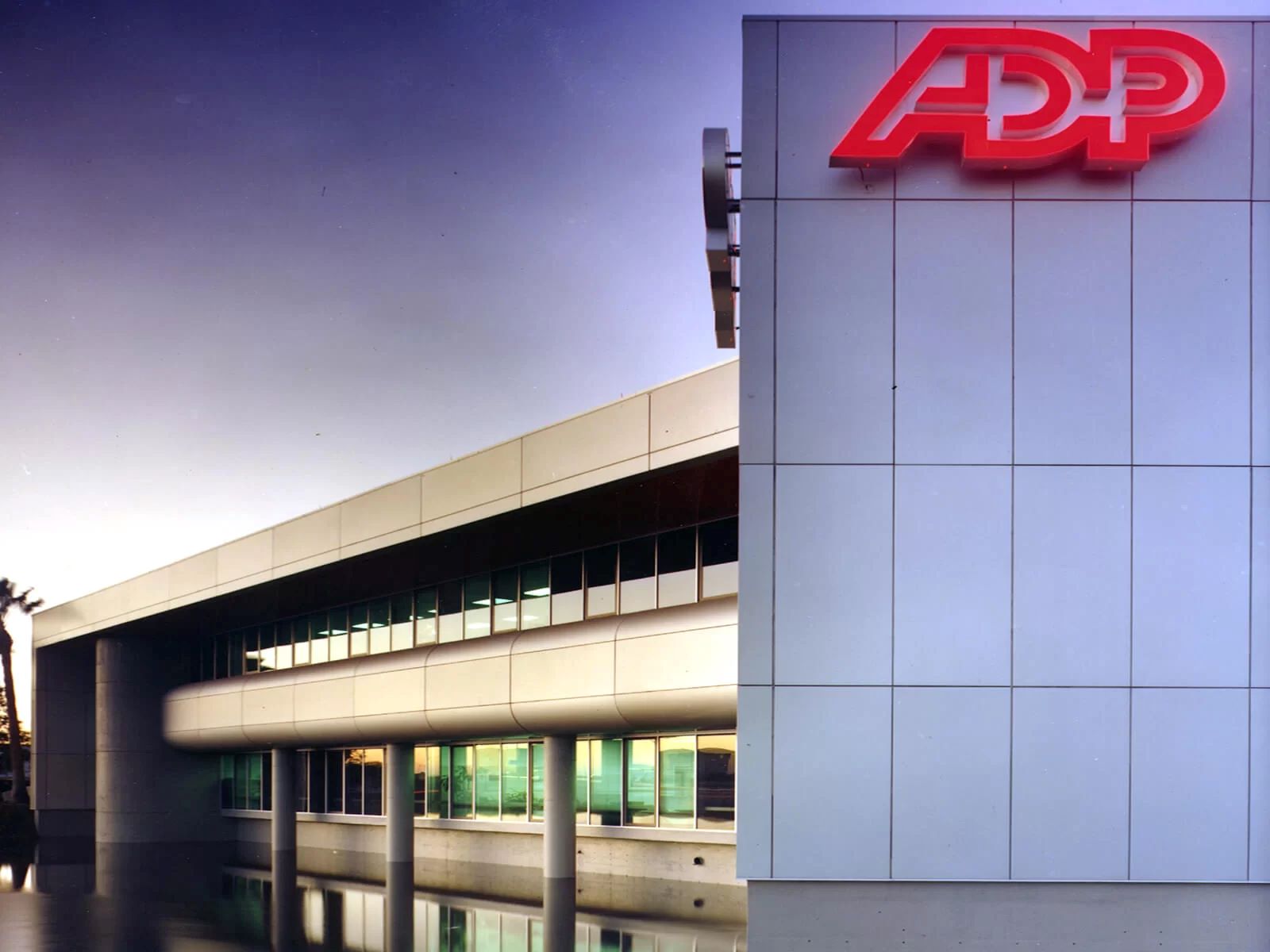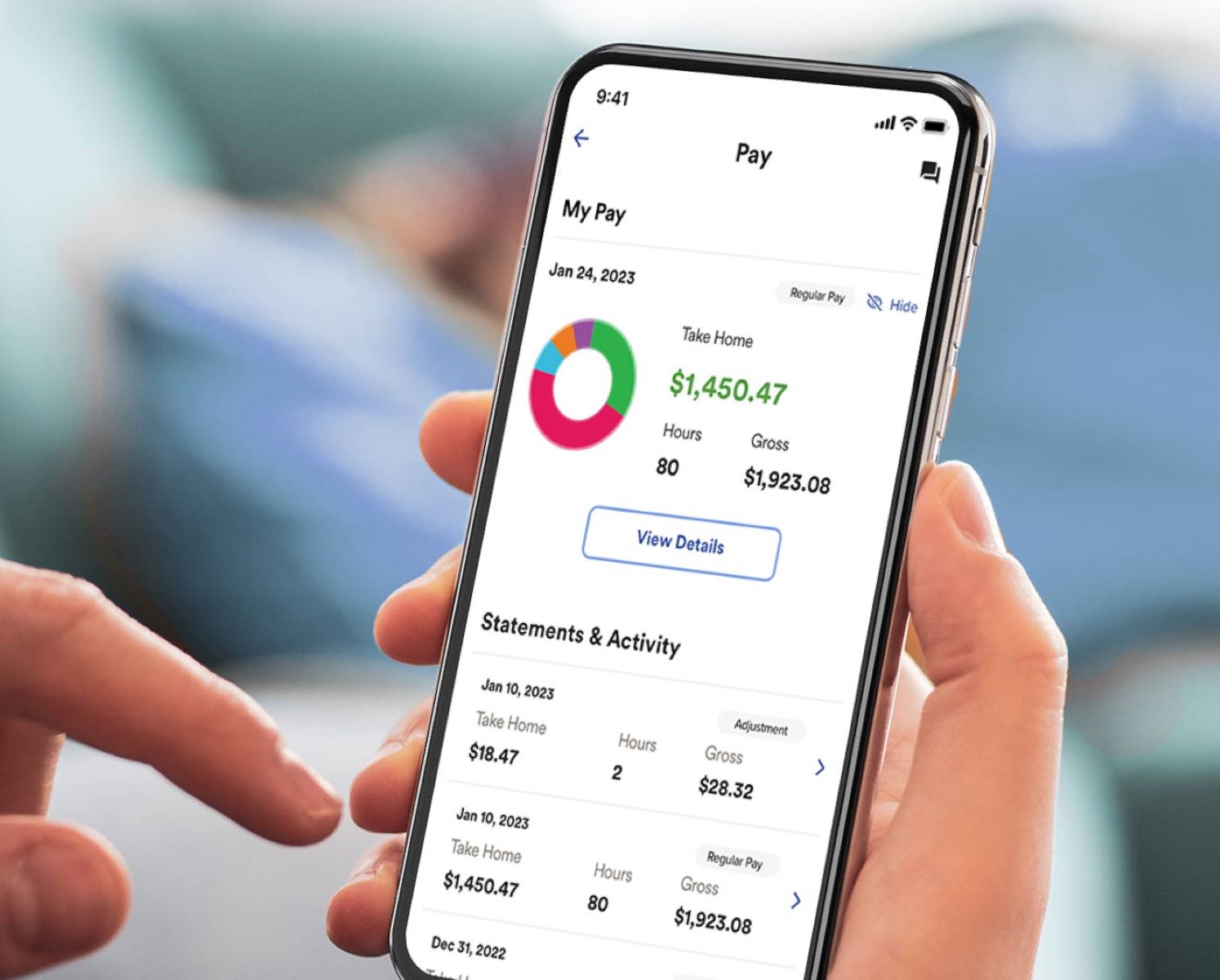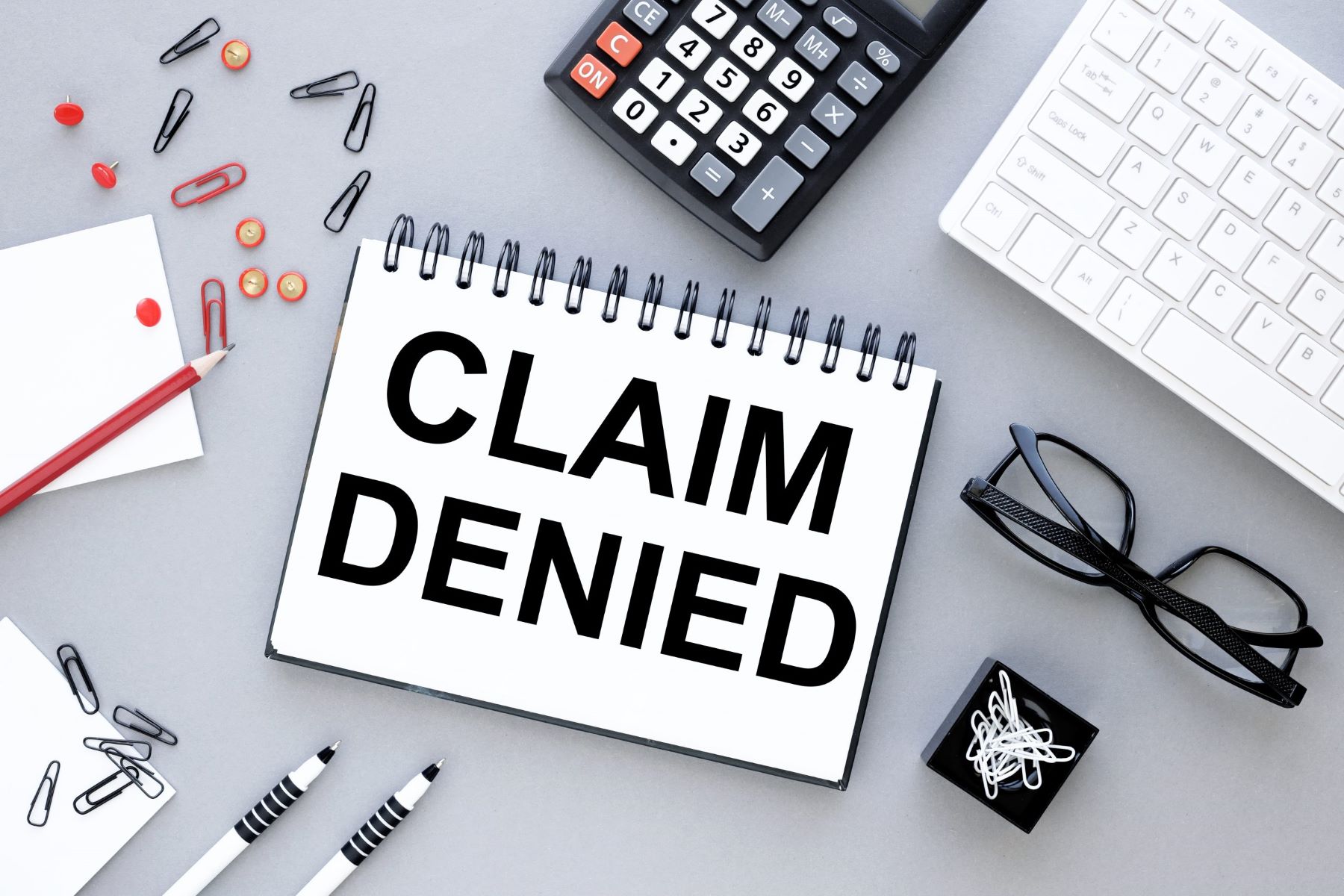

Finance
How Do I Get My 401K From ADP
Modified: December 30, 2023
Looking for answers on how to get your 401K from ADP? Our finance experts have all the information you need to navigate the process smoothly.
(Many of the links in this article redirect to a specific reviewed product. Your purchase of these products through affiliate links helps to generate commission for LiveWell, at no extra cost. Learn more)
Table of Contents
Introduction
Welcome to the world of 401K plans and the process of retrieving your 401K from ADP. ADP, or Automatic Data Processing, is a renowned provider of payroll and human resources solutions for businesses, including managing retirement plans like the 401K. If you have a 401K through ADP and are wondering how to retrieve your funds, you’ve come to the right place.
A 401K is an employer-sponsored retirement savings plan that allows employees to contribute a portion of their salary, which is then invested for their future. It offers the potential for tax benefits and can be a great way to secure your financial future.
Whether you are changing jobs, retiring, or simply looking to consolidate your retirement savings, understanding the process of retrieving your 401K from ADP is crucial. In this article, we will walk you through the necessary steps to retrieve your 401K funds and provide you with important considerations to keep in mind throughout the process.
Retrieving your 401K from ADP may seem like a daunting task, but with the right information and guidance, you can navigate the process smoothly and efficiently. So, let’s dive in and discover how you can get your 401K from ADP!
Understanding ADP
Before we proceed with retrieving your 401K from ADP, it’s essential to have a basic understanding of what ADP is and how it operates.
ADP, or Automatic Data Processing, is a global provider of human capital management solutions. They offer a wide range of services, including payroll processing, time and attendance management, employee benefits administration, and retirement plan administration, such as the 401K. ADP works with businesses of all sizes, from small startups to large corporations, helping them streamline their HR processes and manage their workforce effectively.
When it comes to retirement plans, ADP acts as an intermediary between employers and employees. Employers set up and administer the 401K plans through ADP, allowing employees to contribute a portion of their salary on a pre-tax basis. ADP then manages the investment options, record-keeping, and compliance aspects of the 401K plans.
ADP offers a user-friendly online platform that allows employees to access and manage their 401K accounts. Through this platform, employees can view their balances, make contribution changes, and even initiate the process of retrieving their 401K funds when needed.
It’s important to note that while ADP facilitates the management of 401K plans, they do not hold the funds directly. The funds are held by a custodian or a financial institution appointed by the employer. ADP’s role is to administer the plan and facilitate the transfer or distribution of funds as per the employee’s instructions.
Now that you have a better understanding of ADP and its role in managing 401K plans, let’s move on to the steps you need to take to retrieve your 401K from ADP.
Overview of 401K
Before we delve into the process of retrieving your 401K from ADP, it’s important to have a solid understanding of what a 401K is and why it is a valuable retirement savings tool.
A 401K is a retirement savings plan sponsored by an employer for the benefit of its employees. It is named after the section of the U.S. Internal Revenue Code that governs it. This type of retirement plan allows employees to contribute a portion of their pre-tax salary to a tax-advantaged investment account. Employers may also choose to make matching contributions to encourage employee participation.
One of the primary advantages of a 401K is the potential for tax benefits. Contributions made to a traditional 401K are made on a pre-tax basis, meaning the money is deducted from your paycheck before taxes are taken out. This reduces your taxable income for the year and can result in immediate tax savings. Additionally, any growth or investment earnings in the account are tax-deferred, meaning you won’t owe taxes on them until you withdraw the funds in retirement.
Another key feature of 401K plans is the ability to choose from a variety of investment options. Typically, employers offer a selection of mutual funds, stocks, bonds, or target-date funds for employees to invest their contributions. This allows individuals to align their investments with their risk tolerance and long-term financial goals.
While a 401K is a powerful retirement savings tool, it’s important to be aware of the rules and limitations associated with it. For example, there are contribution limits set by the IRS each year, which may change periodically. Additionally, funds in a 401K account are typically not accessible penalty-free until age 59 ½, though there are certain exceptions for early withdrawals.
Now that we have a basic understanding of what a 401K is and its benefits, let’s move on to the steps involved in retrieving your 401K from ADP.
Steps to Retrieve 401K from ADP
Retrieving your 401K from ADP involves a series of steps to ensure a smooth and secure transfer of your funds. Here’s a breakdown of the process:
- Contacting ADP: The first step is to reach out to ADP’s customer service or your employer’s HR department to initiate the process of retrieving your 401K funds. They will provide you with the necessary information and guidance on how to proceed.
- Verifying Your Identity: ADP will require you to verify your identity to ensure the security of your account and prevent unauthorized access. This may involve providing personal information, such as your date of birth, Social Security number, or other identifying details.
- Completing Required Forms: ADP will provide you with the necessary forms to complete to initiate the transfer of your 401K funds. These forms may include information about your desired rollover option, beneficiary designation, and any other required documentation. Make sure to fill out the forms accurately and thoroughly.
- Choosing a Rollover Option: When retrieving your 401K from ADP, you will need to decide on a rollover option for your funds. You can choose to roll over your 401K into an Individual Retirement Account (IRA), transfer it to a new employer’s retirement plan, or cash out your 401K. It’s important to consider the tax implications and long-term financial goals when making this decision.
- Initiating the Transfer Process: Once you have completed the necessary forms and selected your rollover option, ADP will initiate the transfer process. They will work with the designated custodian or financial institution to transfer your funds directly to the chosen account.
- Monitoring the Rollover Progress: It’s important to keep track of the rollover progress and stay in touch with ADP or the custodian to ensure a seamless transfer of your 401K funds. They will provide you with updates and notifications throughout the process.
Following these steps will help you retrieve your 401K funds from ADP efficiently and securely. However, it’s important to note that the specific process and requirements may vary depending on your employer’s plan and ADP’s policies.
Now that you are familiar with the steps involved in retrieving your 401K from ADP, let’s explore some important considerations to keep in mind during this process.
Contacting ADP
The first step in retrieving your 401K from ADP is to reach out to ADP’s customer service or your employer’s HR department. They will provide you with the necessary guidance and instructions on how to initiate the process.
Start by gathering the contact information for ADP’s customer service. This information is typically available on ADP’s website or provided to you by your employer. You may find a dedicated phone number or email address specifically for retirement plan inquiries.
When contacting ADP, be prepared to provide your personal details, such as your full name, date of birth, and Social Security number. This information will be used to verify your identity and ensure the security of your account.
During your conversation with ADP’s customer service representative, be sure to explain your intention to retrieve your 401K funds. They will guide you through the process and provide you with the necessary forms and instructions to proceed. They may also inform you about any specific requirements or documentation needed for the retrieval process.
Additionally, if you have any specific questions or concerns, don’t hesitate to ask. ADP’s customer service team is there to assist you and address any inquiries you may have.
It’s important to note that the availability and responsiveness of ADP’s customer service may vary, so it’s recommended to be patient and persistent if needed. Keep track of the date and time you contacted them, as well as the name of the representative you spoke with, for future reference.
Remember, contacting ADP is the first step in the process of retrieving your 401K funds. Once you have connected with them and obtained the necessary information, you can proceed to the next steps, which we will cover in the upcoming sections.
Now that you understand the significance of contacting ADP, let’s move on to the next step: verifying your identity.
Verifying Your Identity
Verifying your identity is a crucial step in the process of retrieving your 401K from ADP. It ensures the security of your account and protects against unauthorized access.
When contacting ADP, they will request certain personal information to verify your identity. This information may include your full name, date of birth, Social Security number, and possibly additional details such as your address or employee ID.
ADP may use various methods to verify your identity, such as asking security questions based on your personal information or requesting supporting documentation, such as a copy of your driver’s license or passport.
To assist with the verification process, it’s important to have your personal information readily available when contacting ADP. Make sure the information you provide matches what ADP has on record for your account. This helps ensure a smooth and efficient verification process.
If the verification process encounters any issues or discrepancies, ADP may ask you to provide additional documentation or take further steps to confirm your identity. It’s essential to cooperate and provide the requested information promptly to avoid any unnecessary delays in retrieving your 401K funds.
Verification of your identity helps protect your financial assets and prevents unauthorized access to your 401K account. This extra layer of security ensures that only authorized individuals can initiate the retrieval process.
Now that your identity has been verified, you can proceed to the next step: completing the required forms. This step involves providing essential information and making decisions regarding the handling of your 401K funds.
Completing Required Forms
Once your identity has been verified, the next step in retrieving your 401K from ADP is completing the required forms. These forms are necessary to initiate the transfer or distribution of your 401K funds according to your instructions.
ADP will provide you with the necessary forms, either electronically or in paper format, depending on their preferred method of communication. The specific forms may vary based on your employer’s plan and ADP’s policies, but they generally include:
- 401K Distribution Request Form: This form outlines your request for the transfer or withdrawal of your 401K funds. It will typically require information such as your account details, the amount or percentage you want to transfer or withdraw, and your desired receiving account information.
- Beneficiary Designation Form: This form allows you to designate one or more beneficiaries who will receive your 401K funds in the event of your passing. It’s important to keep your beneficiary designations up to date to ensure your assets are distributed according to your wishes.
- Tax Withholding Form: If you choose to cash out a portion or the entirety of your 401K, you may need to complete a tax withholding form. This form allows you to specify the amount of federal and state taxes you want to be withheld from the distribution.
- Other Required Documentation: Depending on your specific circumstances, additional documentation may be required. For example, if you are rolling over your 401K funds into an IRA, you may need to provide the account information and identification of the receiving institution.
When completing these forms, it’s crucial to review them carefully and provide accurate information. Any errors or missing information can cause delays or complications in the retrieval process.
If you have any questions or concerns while completing the forms, you can reach out to ADP’s customer service for assistance. They can provide clarification and guidance to ensure you fill out the forms correctly.
Once you have completed the forms, make copies for your records and submit them to ADP as instructed. Keep track of the submission date and any confirmation or reference numbers provided by ADP for future reference.
With the required forms completed, you are now ready to move on to the next step: choosing a rollover option for your 401K funds.
Choosing a Rollover Option
After completing the required forms, the next step in retrieving your 401K from ADP is choosing a rollover option for your funds. This decision will determine how your 401K funds will be handled and where they will be transferred.
When it comes to a 401K rollover, you generally have three main options:
- Rolling Over Into an Individual Retirement Account (IRA): This option involves transferring your 401K funds into an IRA. An IRA gives you greater control over your investments and potentially a wider range of investment options. In addition, rolling over to an IRA allows your funds to continue growing on a tax-deferred basis until you choose to make withdrawals in retirement.
- Transferring to a New Employer’s Retirement Plan: If you are changing jobs and your new employer offers a retirement plan, you may be able to transfer your 401K funds directly into the new plan. This option allows you to consolidate your retirement savings and continue benefiting from tax advantages within the new plan.
- Cashing Out: While not recommended for everyone, cashing out your 401K is an option if you need immediate access to the funds. However, keep in mind that cashing out may have significant tax implications, including potential early withdrawal penalties and a potentially higher tax liability.
When deciding on a rollover option, consider factors such as your long-term financial goals, risk tolerance, and tax implications. It’s important to evaluate each option carefully and consult with a financial advisor if needed.
Additionally, ADP or your employer may provide additional guidance or restrictions regarding your rollover options. Be sure to review any communication or resources provided by ADP to ensure you are making an informed decision.
Once you have chosen your desired rollover option, indicate it on the appropriate form provided by ADP. Provide any necessary details, such as the account information for the receiving institution or retirement plan.
Keep in mind that rolling over your 401K funds is generally the most advantageous choice for long-term retirement planning. It allows you to maintain the tax benefits and continue growing your funds for the future.
With your rollover option chosen, you are ready to proceed to the next step: initiating the transfer process.
Initiating the Transfer Process
Once you have completed the necessary forms and selected your desired rollover option, it’s time to initiate the transfer process of your 401K funds from ADP. This step involves working with ADP and the designated custodian or financial institution to facilitate a seamless transfer.
ADP will take the lead in initiating the transfer on your behalf. They will work with the custodian or financial institution that holds your 401K funds to ensure a smooth transfer process. The specific timeframe for the transfer will depend on various factors, such as the custodian’s procedures and any market or administrative delays.
During this phase, it’s important to stay in communication with ADP and the receiving institution. They may require additional information or documentation to ensure the transfer is completed accurately.
If you are rolling over your 401K funds into an IRA, you will need to provide the account information of the receiving institution to ADP. This information typically includes the financial institution’s name, address, and account number. Double-check the accuracy of the information to avoid any transfer delays or errors.
ADP or the receiving institution will provide updates on the progress of the transfer. They may send you notifications or statements to keep you informed about the status of your 401K funds. It’s advisable to review these updates carefully and contact ADP or the receiving institution if you have any questions or concerns.
Keep in mind that during the transfer process, your 401K funds will remain invested and potentially continue to grow. However, they may not be available for further contributions or changes until the transfer is complete.
Once the transfer is initiated, it’s important to be patient. The process may take several weeks or longer, depending on the circumstances. Continue to monitor the progress and stay in touch with ADP and the receiving institution as needed.
With the transfer process underway, we move on to the final step: monitoring the rollover progress.
Monitoring the Rollover Progress
As you initiate the transfer process of your 401K funds from ADP, it’s important to monitor the rollover progress to ensure a successful transfer and keep track of your retirement savings. By staying involved in the process, you can address any potential issues or delays and have peace of mind regarding your funds.
During the transfer process, ADP or the receiving institution will provide updates on the progress of the rollover. It’s essential to review any notifications, statements, or communications sent by both parties promptly.
Take note of the expected timeframe for the transfer as communicated to you by ADP. Keep in mind that unforeseen delays can sometimes occur due to administrative procedures, market conditions, or other factors. If the transfer takes longer than anticipated, reach out to ADP or the receiving institution for an update and clarification.
Keep track of any confirmation numbers, reference numbers, or other documentation provided by ADP or the receiving institution. These details will be helpful in case you need to follow up or provide additional information during the rollover process.
If you have any questions or concerns during the transfer process, don’t hesitate to reach out to ADP’s customer service or the receiving institution’s customer support. They are there to assist you and ensure a smooth transition of your 401K funds.
Once the rollover is complete, confirm with the receiving institution that your funds have been successfully transferred into your new account. Take some time to review your new account and ensure all the transferred funds are accounted for. If you notice any discrepancies or discrepancies, contact the receiving institution immediately to address the issue.
After the successful transfer of your 401K funds, ensure that you update your records accordingly. Keep track of your new account information, account statements, and any other documentation related to your retirement savings.
Remember that the rollover process is an important step in managing your retirement savings. By actively monitoring the progress, you can ensure a secure and efficient transfer of your 401K funds from ADP.
Now that you are familiar with the steps involved in retrieving your 401K from ADP and monitoring the rollover progress, let’s move on to some important considerations to keep in mind throughout this process.
Important Considerations
As you navigate the process of retrieving your 401K from ADP, there are several important considerations to keep in mind to make informed decisions and ensure a successful transfer:
- Tax Implications: Before making any decisions, understand the tax implications associated with your 401K withdrawal or rollover. Cashing out your 401K may result in taxes and penalties, while rolling over into an IRA or a new employer’s plan can provide continued tax advantages.
- Early Withdrawal Penalties: If you decide to cash out your 401K before reaching age 59 ½, be aware that you may incur early withdrawal penalties. These penalties can significantly reduce the amount of funds you receive, so carefully consider the financial implications before opting for this route.
- Investment Options: When rolling over your 401K, consider the investment options available in the receiving account. Evaluate the risk level, performance history, and fees associated with the investment choices to ensure they align with your long-term financial goals and risk tolerance.
- Financial Advice: If you are uncertain about the best course of action for your 401K funds, consider seeking the advice of a financial advisor. They can provide personalized guidance based on your individual financial situation and help you make informed decisions.
- Employer Matching Contributions: If your employer provided matching contributions to your 401K, understand the vesting schedule and any applicable guidelines for these contributions. Depending on the plan, you may need to fulfill specific requirements to retain these matching funds.
- Deadline for Rollovers: Be aware of any deadlines for initiating the rollover process. The IRS typically requires rollovers to be completed within 60 days to avoid tax consequences. Failing to meet the deadline may result in taxable distributions and potential penalties.
- Review Plan Documentation: Take the time to review your employer’s retirement plan documentation to understand any specific rules, obligations, or limitations regarding 401K withdrawals or rollovers. By being familiar with the plan details, you can make informed decisions and ensure compliance.
By considering these factors, you can make sound decisions regarding the retrieval and handling of your 401K funds. Remember, the decisions you make now can have a significant impact on your financial future, so take the time to gather information and seek professional guidance as needed.
Now, let’s wrap up our discussion on retrieving your 401K from ADP.
Conclusion
Retrieving your 401K from ADP requires careful navigation of the process to ensure a successful transfer of your funds. By following the steps outlined in this article and considering the important considerations, you can retrieve your 401K efficiently and make informed decisions about your retirement savings.
Understanding ADP’s role as a retirement plan administrator and the basics of a 401K is essential to comprehend the retrieval process. From there, contacting ADP and verifying your identity will set the stage for completing the required forms accurately.
Choosing a rollover option that aligns with your long-term financial goals is crucial. Whether you decide to roll over into an IRA, transfer to a new employer’s plan, or cash out, be mindful of the tax implications and potential penalties associated with each option.
As you initiate the transfer process, monitoring the rollover progress is key. Stay connected with ADP and the receiving institution, keeping track of documentation and being proactive about any delays or concerns that arise.
Throughout this endeavor, it’s important to consider factors such as taxes, penalties, investment options, and seek the advice of a financial advisor when needed. Familiarize yourself with your employer’s retirement plan documentation and respect any rollover deadlines to avoid potential tax consequences.
Retrieving your 401K from ADP marks a significant step in securing your financial future. By navigating the process with knowledge and caution, you can ensure a smooth transition of your retirement savings.
Remember, every individual’s financial situation is unique, and it’s important to make decisions based on your specific circumstances. Consult with professionals and experts as needed to make informed choices that align with your long-term goals.
Now that you have a comprehensive understanding of how to retrieve your 401K from ADP, you can confidently take the necessary steps to secure your retirement savings and embark on a path towards a financially sound future.














